Postural Syndrome
Updated:
(Also known as Postural Dysfunction)
What is postural syndrome?
Postural syndrome of the neck is a relatively common condition that causes pain in the neck without significant damage or trauma to tissue. Patients with this condition only experience an ache or pain during activities placing sustained stress on normal tissue.
The mechanism of pain onset in this condition can be demonstrated by gently bending your index finger backwards until you feel a stretch (figure 1).
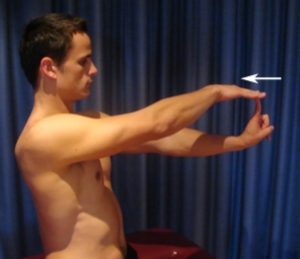
At this point there is no tissue damage or pain, however if you maintain this position for long enough, your finger will gradually become painful or ache. Once the finger is released and allowed to change position, the pain or ache will ease. Postural syndrome in the neck occurs in a similar fashion and typically occurs due to sitting or standing in poor positions for prolonged periods of time (figures 2, 3 and 4).
When standing or sitting slouched (figures 2 and 3), the bend in your upper back and arch in your upper neck increases (figure 4). In addition your shoulders typically move forwards. This places considerable stretching force and increased load on the joints and muscles of your neck and upper back and will gradually cause an ache or pain if sustained for too long. When this occurs the condition is known as postural syndrome.
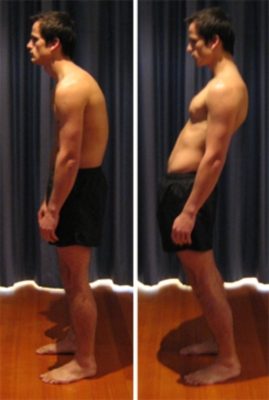
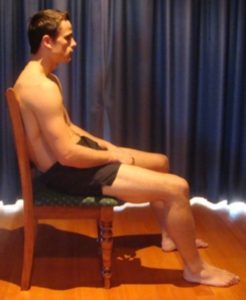
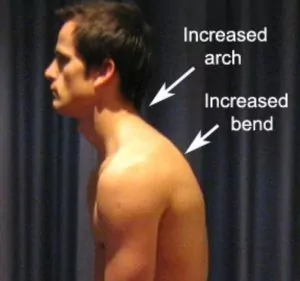
Causes of postural syndrome
Postural syndrome is a condition that is caused by adopting poor posture over a prolonged period of time. This may occur in any position such as standing or lying, but is particularly common during sitting (e.g. at a computer, watching television or driving).
Postural syndrome is also relatively common during everyday activities that encourage the arms to move forward in front of the body such as cooking, cleaning, gardening or ironing.
In sport, postural syndrome is often seen in athletes whose activity involves prolonged bending forward postures, such as cycling, hockey players, baseball catchers and wicket keepers in cricket.
Signs and symptoms of postural syndrome
Patients with postural syndrome typically have normal, pain-free movement. Symptoms are only experienced when poor posture is maintained for prolonged periods. This can occur in any position (e.g. sitting, standing, lying etc.).
Pain is typically experienced as a dull ache or burning sensation in the neck and can sometime be accompanied by symptoms in the upper back or shoulders. Occasionally, headaches may also be present. Usually the pain associated with postural syndrome will quickly ease upon moving or changing positions, thereby taking the strain off the affected structures.
Diagnosis of postural syndrome
A thorough subjective and objective examination from a physiotherapist is usually sufficient to diagnose postural syndrome of the neck. Investigations such as an X-ray, MRI or CT scan may be required, in rare cases, to rule out other conditions.
Treatment for postural syndrome

Members Only ContentBecome a PhysioAdvisor Member to gain full access to this exclusive content. For more details see Become a Member. Already a member? Login Now
Achieving good posture

Members Only ContentBecome a PhysioAdvisor Member to gain full access to this exclusive content. For more details see Become a Member. Already a member? Login Now
Prognosis of postural syndrome
The prognosis of patients with postural syndrome is excellent provided the patient is motivated and compliant with physiotherapy treatment, advice and exercises. Most patients can achieve pain free status immediately upon correction of poor posture. Retraining movement patterns and performing appropriate exercises is essential to prevent symptom recurrence.
Physiotherapy for postural syndrome
Physiotherapy treatment forpostural syndromecan significantly help to reduce symptoms, ensure an optimal outcome and prevent recurrence. Physiotherapy may comprise:
- Postural education and retraining (see posture)
- Exercises to improve strength, posture or flexibility
- Soft tissue massage (particularly to the upper cervical extensors, pectorals, upper trapezius and levator scapulae muscles)
- Electrotherapy (e.g. ultrasound)
- Dry needling
- Postural taping
- Postural bracing
- Joint mobilization (particularly to the lower neck and upper back)
- The use of a lumbar support for sitting
- Activity modification advice
- Biomechanical correction
- Clinical Pilates
- Ergonomic desk setup advice
- Ergonomic mobile phone advice
- Bike setup advice
Contributing factors to the development of postural syndrome
There are several factors that may contribute to the development of this condition. These factors need to be assessed and corrected with direction from a physiotherapist and may include:
- poor posture
- poor ergonomic set-up
- joint stiffness (particularly of the neck, upper back or hips)
- a sedentary lifestyle
- poor core stability
- muscle weakness (particularly the deep cervical flexors, spinal extensors and scapula retractors)
- muscle tightness (particularly the pectorals, upper cervical extensors, upper trapezius, levator scapulae, abdominals, hip flexor and hamstring muscles)
- a lifestyle involving large amounts of sitting, bending, slouching, shoulders forwards activities or lifting
- decreased fitness or fatigue
- a lifestyle involving excessive use of computers, laptops or mobile phones
- inadequate recovery periods from poor postural positions
- use of an inappropriate pillow during sleep
Exercises for postural syndrome
The following exercises are commonly prescribed to patients with this condition. You should discuss the suitability of these exercises with your physiotherapist prior to beginning them. Generally, the initial exercises should be performed 3 – 5 times daily, whilst the intermediate and advanced exercises should be performed twice daily.
All exercises should only be performed provided they do not cause or increase symptoms. Your physiotherapist can advise when it is appropriate to begin the initial exercises and eventually progress to the intermediate and advanced exercises. As a general rule, addition of exercises or progression to more advanced exercises should only take place provided there is no increase in symptoms.
Initial Exercises
Chin Tucks
Begin sitting or standing tall with your back and neck straight, shoulders should be back slightly (figure 9). Tuck your chin in as far as you can go without pain and provided you feel no more than a mild to moderate stretch. Keep your eyes and nose facing forwards. Hold for 2 seconds and repeat 10 times provided the exercise is pain free. Repeat 3 – 5 times daily.
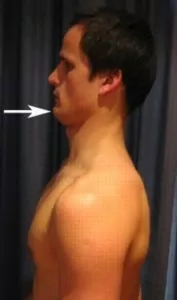
Shoulder Blade Squeezes
Begin sitting or standing tall with your back and neck straight (figure 10). Squeeze your shoulder blades together as far as you can go without pain and provided you feel no more than a mild to moderate stretch. Hold for 5 seconds and repeat 10 times provided the exercise is pain free. Repeat 3 – 5 times daily.

Neck Rotations
Begin sitting with your back and neck straight and your shoulders back slightly. Turn your head looking over one shoulder as far as you can go without pain and provided you feel no more than a mild to moderate stretch (figure 11). Then repeat the exercise turning your neck in the opposite direction. Keep your neck straight and don’t allow your head to poke forwards during the movement. Repeat 10 times to each side provided the exercise is pain free. Repeat 3 – 5 times daily.
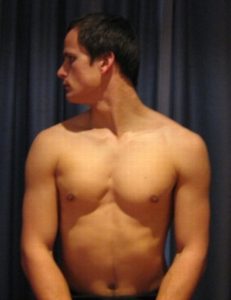
Intermediate Exercises

Members Only ContentBecome a PhysioAdvisor Member to gain full access to this exclusive content. For more details see Become a Member. Already a member? Login Now
Advanced Exercises

Members Only ContentBecome a PhysioAdvisor Member to gain full access to this exclusive content. For more details see Become a Member. Already a member? Login Now
Rehabilitation Protocol for postural syndrome

Members Only ContentBecome a PhysioAdvisor Member to gain full access to this exclusive content. For more details see Become a Member. Already a member? Login Now
 Physiotherapy products for postural syndrome
Physiotherapy products for postural syndrome
Some of the most commonly recommended products by physiotherapists to assist patients with this condition include:
-
 Wheat Bags
Wheat Bags -
 OPPO – Posture Aid / Clavicle Brace (OPP2075)
OPPO – Posture Aid / Clavicle Brace (OPP2075) -
 AllCare Band
AllCare Band -
 Premium Strapping Tape 38mm (Victor)
Premium Strapping Tape 38mm (Victor) -
 AllCare Pro-TENS Machine
AllCare Pro-TENS Machine -
 AllCare Tubing
AllCare Tubing -
 AllCare Spikey Massage Ball
AllCare Spikey Massage Ball -
 Fixomull Stretch 5cm x 10m
Fixomull Stretch 5cm x 10m -
 AllCare Foam Roller Round
AllCare Foam Roller Round -
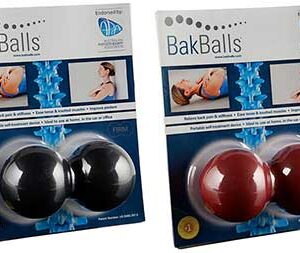 BakBalls
BakBalls -
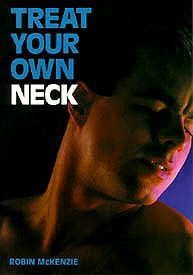 McKenzie Treat Your Own Neck Book
McKenzie Treat Your Own Neck Book -
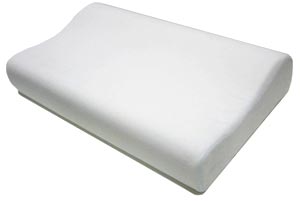 Dentons Impressions Classic Memory Foam Therapeutic Pillow
Dentons Impressions Classic Memory Foam Therapeutic Pillow -
 Lumbar Rolls (‘D’ Shaped)
Lumbar Rolls (‘D’ Shaped)
To purchase physiotherapy products for this condition click on one of the above links or visit the PhysioAdvisor Shop.
 Find a Physio for postural syndrome
Find a Physio for postural syndrome
Find a physiotherapist in your local area who can treat this condition.
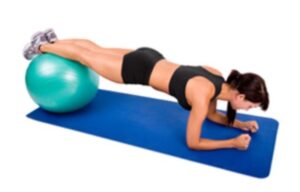 More Exercises
More Exercises
- Postural Exercises.
- Neck Flexibility Exercises.
- Upper Back Flexibility Exercises.
- Beginner Pilates Exercises.
- Cardiovascular Exercise.
- Core Stability Exercises.
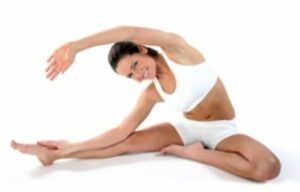 Recommended Reading
Recommended Reading
- Correct Posture.
- Postural Taping.
- Mobile Phone Ergonomics.
- Ergonomic Computer Setup.
- Bike Setup.
- Choosing a School Bag.
- Neck Diagnosis Guide.
Become a PhysioAdvisor Member

Link to this Page
If you would like to link to this article on your website, simply copy the code below and add it to your page:
<a href="https://physioadvisor.com.au/injuries/neck-head/postural-syndrome-2”>Postural Syndrome – PhysioAdvisor.com</a><br/>PhysioAdvisor offers detailed physiotherapy information on Postural Syndrome of the neck including: diagnosis, treatment, exercises, rehabilitation protocol, physiotherapy products and more...
Return to the top of Postural Syndrome.

